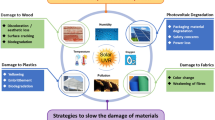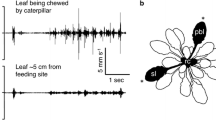Abstract
The stone pine (Pinus pinea L.) is exploited for wood production and its edible kernels. Cones take 3 years to mature, while other newer cones are growing on the tree. Currently, mechanical cone harvesting by tree vibration drives the profitability and development of this crop in forest ecosystems. However, the adaptation of vibration parameters is necessary to avoid damage to the tree and for the implementation of good harvesting practices. Direct measurements of acceleration transmissibility along fruit-bearing branches under controlled laboratory conditions showed that vibrations in the frequency range of 18.0 ± 5.3 Hz were capable of producing resonance phenomena in mature cones. Morphological changes produced in the mature cones, especially in the stalk and total weight, amplified the acceleration transmissibility, providing more favourable conditions for fruit detachment. Field tests with stone pines and a trunk shaker confirmed the potential of selective mechanical harvesting, which is conditional on the vibration parameters applied. The frequency range of the resonance of the mature cone proved to be suitable for vibration of the tree at its trunk. The quality and efficiency of the mechanical harvesting were determined to be inversely related parameters during harvesting by vibration. Trunk vibration at a frequency of 18 Hz and approximate acceleration of 65 m/s2 achieved a high harvest quality, with limited detachment of shoots and unripe cones, and a harvesting efficiency near 85%.




Similar content being viewed by others
References
Aristizabal ID, Oliveros CE, Alvarez F (2003) Mechanical harvest of coffee applying circular and multidirectional vibrations. Trans ASAE 46(2):205–209
Barranco D, Fernández R, Rallo L (2008) El cultivo del olivo. Mundi-Prensa, Madrid
Barriguinha AF, Pinheiro AC, Gonçalves AC et al (2005) Avaliação do Desempenho de um Vibrador Mecânico na Colheita de Pinha (Pinus pinea L.). In: Proceedings of the fifth national forestry conference, Visue, Portugal, pp 16–49
Bonari E, Bagliacca M, Ciomei D, Senesi G (1980) Raccolta dei pinoli con machine scuotitrici. Macchine e Motori Agricoli 38(12):41–46
Brüchert F, Speck O, Spatz HC (2003) Oscillations of plants stems and their damping: theory and experimentation. Phil Trans R Soc Land B. doi:10.1098/rstb.2003.1348
Calama R, Montero G (2007) Cone and seed production from stone pine (Pinus pinea L.) stands in Central Range (Spain). Eur J Forest Res. doi:10.1007/s10342-005-0100-8
Castro-Garcia S, Rosa UA, Gliever CJ, Smith D, Burns JK, Krueger WH, Ferguson L, Glozer K (2009) Video evaluation of table olive damage during harvest with a canopy shaker. HortTechnology 19:260–266
Eliasson L (2005) Effects for forwarder tyre pressure on rut formation and soil compactation. Silva Fenn 39(4):549–557
Erdogan D, Guner M, Dursun E, Gezer I (2002) Mechanical harvesting of apricots. Biosyst Eng. doi:10.1016/S1537-5110(03)00024-2
Ewins DJ (2000) Modal testing: theory practice and application. Research Studies Press, England
Ferguson L (2006) Trends in olive fruit handling previous to its industrial transformation. Grasas y Aceites. doi:10.3989/gya.2006.v57.i1
Gordo FJ, Mutke S, Gil L (1997) Variabilidad en la producción de fruto de Pinus pinea L. en la provincia de Valladolid. In: Proceedings of the second spanish forestry conference, Pamplona, Spain, pp 327–332
James KR (2003) Dynamic loading of trees. J Arboric 29(3):165–171
James KR, Haritos N, Ades P (2006) Mechanical stability of trees under dynamic loads. Am J Bot 93(10):1522–1530
Jonsson MJ, Foetzki A, Kalberer M, Lundstrom T, Ammann W, Stöckli V (2007) Natural frequencies and damping ratios of Norway spruce [Picea abies (L.) Karst] growing on subalpine forested slopes. Trees. doi:10.1007/s00468-007-0147-x
Kerzenmacher T, Gardiner B (1998) A mathematical model to describe the dynamic response of a spruce tree to the wind. Trees 12:385–394
MARM (2007) Anuario de Estadística Forestal. Ministerio de Medio Ambiente y Medio Rural y Marino. Spain. http://www.mma.es/portal/secciones/biodiversidad/montes_politica_forestal/estadisticas_forestal/. Accessed 29 June 2010
Martinez-Zurimendi P, Alvarez JM, Pando V, Dominguez M, Gordo J, Finat L, Sierra-de-Grado R (2009) Effects of vibration on stone pine trees (Pinus pinea L.) on the vigor of the trees: crown density growth shoots and parasites of weak trees. Invest Agrar-Sist R 18(1):50–63
Miles JA, Mehlschau JJ, Moini S (1981) Factors affecting harvest of Loblolly pine cones. Trans ASAE 24(2):323–335
Moini S, Miles JA (1981) Conifer cone harvesting: an experimental approach. Trans ASAE 24(3):549–551
Montero-Gonzalez G, Candela-Plaza JA, Rodriguez-Navarro A (2004) El pino piñonero (Pinus pinea L.) en Andalucía. Junta de Andalucía, Seville
Montoya-Oliver JM (1990) El pino piñonero. Mundi-Prensa, Madrid
Moore JR, Maguire DA (2005) Natural sway frequencies and damping ratios of trees: influence of crown structure. Trees. doi:10.1007/s00468-003-0295-6
Müller U, Gindl W, Jeronimidis G (2006) Biomechanics of a branch–stem junction in softwood. Trees. doi:10.1007/s00468-006-0079-x
Mutke S, Gordo J, Climent J, Gil L (2003) Shoot growth and phenology modelling of grafted stone pine (Pinus pinea L.) in Inner Spain. Ann Forest Sci. doi:10.1051/forest:2003046
Mutke S, Gordo J, Gil L (2005) Cone yield characterization of a stone pine (Pinus pinea L.) clone bank. Silvae Genet 54(4–5):189–197
Peruzzi A, Mazzoncini M, Ciomei D, Senesi G (1989) Meccanizzazione delle operazioni di raccolta degli strobili di pino domestico Pins Pinea L. Nota 2 Risultati produttivi e primi valutazioni degli effetti delle vibrazioni sulle piante. Ingegneria Agaria. Anno XX 4:234–239
Pezzi F, Caprara C (2009) Mechanical grape harvesting: investigation of the transmission of vibrations. Biosyst Eng. doi:10.1016/j.biosystemseng.2009.04.002
Pinheiro AC, Peça JO, Gonçalves AC, Ribeiro NA et al (2003) Utilização de um vibrador multidireccional na colheita mecânica de pinha (Pinus pinea L.). In: Proceedings of first national conference of rural engineering, Lisbon
Rosa UA, Cheetancheri KG, Gliever CJ, Lee SH, Thompson J, Slaughter DC (2008) An electro-mechanical limb shaker for fruit thinning. Comput Electron Agric. doi:10.1016/j.compag.2007.11.008
Sanders KF (2005) Orange harvesting systems review. Biosyst Eng. doi:10.1016/j.biosystemseng.2004.10.006
So JD (2003) Vibratory harvesting machine for boxthorn (Lycium chinense Mill) berries. Trans ASAE 46(2):211–221
Spatz HC, Brüchert F, Pfisterer J (2007) Multiple resonance damping or how do trees escape dangerously large oscillations? Am J Bot 94(10):1603–1611
Torregrosa A, Martin B, Ortiz C, Chaparro O (2006) Mechanical harvesting of processed apricots. Appl Eng Agric 22(4):499–506
Whitney JD, Hartmond U, Kender WJ, Burns JK, Salyani M (2000) Orange removal with trunk shakers and abscission chemicals. Appl Eng Agric 16(4):367–371
Acknowledgments
The authors acknowledge the financial support from “Empresa de Gestión Medioambiental, S.A (EGMASA)” and “Obras y Servicios Ambientales S.A (SEFOSA)” provided for this study and the Spanish Ministry of Science and Technology (project AGL2007-61533) for the research methodology and instrumentation used. The authors are most grateful to Prof. Dr. Luis Gil of the Universidad Politécnica de Madrid (Spain) and two anonymous reviewers for theirs valuable comments and revisions.
Author information
Authors and Affiliations
Corresponding author
Additional information
Communicated by J. Carlson.
Rights and permissions
About this article
Cite this article
Castro-García, S., Blanco-Roldán, G.L. & Gil-Ribes, J.A. Frequency response of Pinus Pinea L. for selective cone harvesting by vibration. Trees 25, 801–808 (2011). https://doi.org/10.1007/s00468-011-0556-8
Received:
Revised:
Accepted:
Published:
Issue Date:
DOI: https://doi.org/10.1007/s00468-011-0556-8




